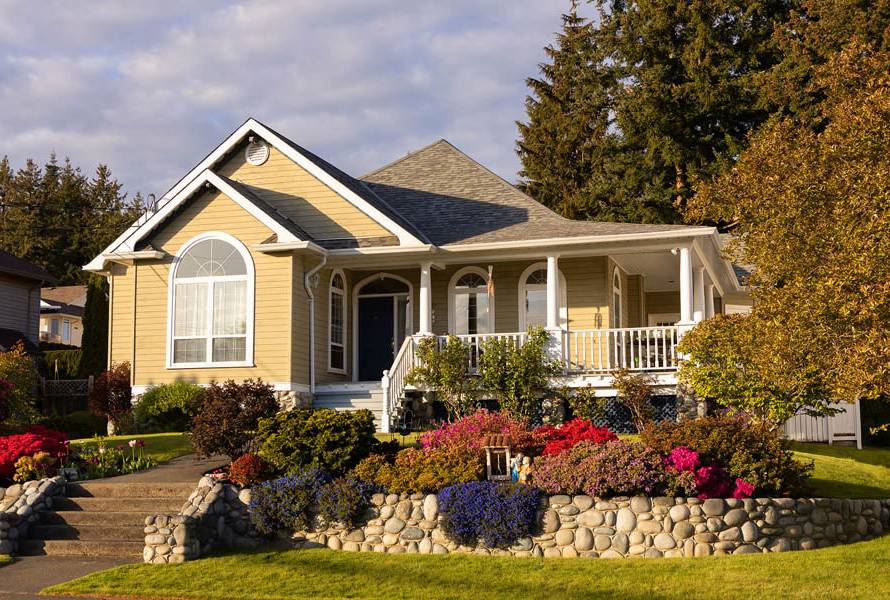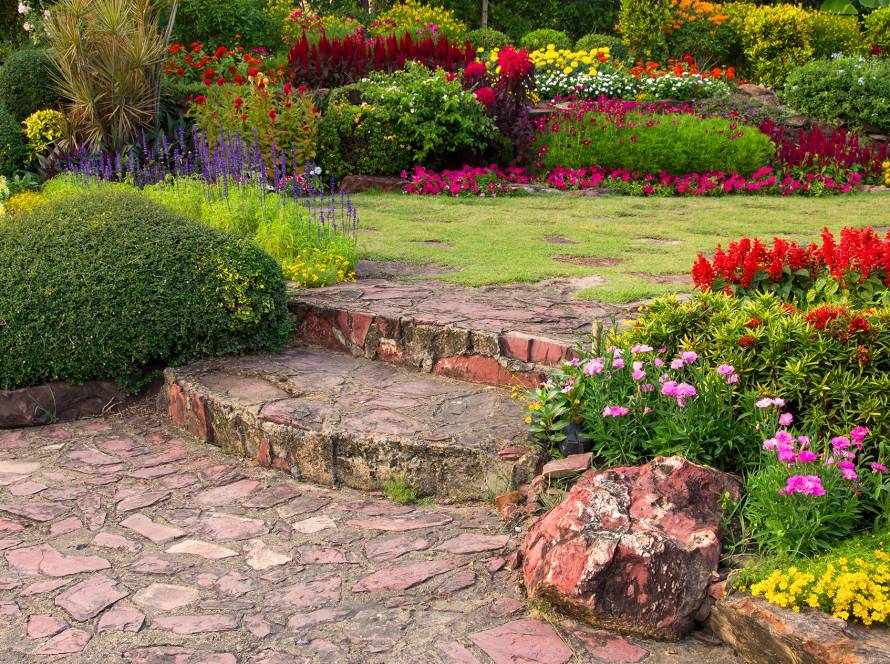When people picture a beautiful landscape, they often imagine either stone walkways and patios or lush greenery and flowers. The truth? A breathtaking outdoor space happens only when those two elements, hardscape and planting, speak to each other. Alone, they’re fine. Together, they tell a story.
Hardscape, the Steady Framework
Think of hardscape as the backbone. Patios, retaining walls, steps, fire pits, and pathways create structure and guide the eye. Without them, plantings may feel lost, like paint without a canvas.
A stone walkway directs movement, while a retaining wall not only tames slopes but also creates planting beds with depth. Hardscape builds order, rhythm, and flow.
Planting, the Living Soul
Now imagine that same stone walkway lined with lavender, or a courtyard softened by climbing vines. Plants weave warmth and personality into the design.
They soften edges, add seasonal drama, and bring color that shifts with the months. Shrubs provide privacy, trees offer shade, and perennials deliver surprise after surprise.
The living layer turns a hardscape from rigid to welcoming.
A Conversation, Not a Competition
The magic lies in the balance. Too much hardscape, and a yard feels cold. Too many plants without structure, and the design unravels into chaos. But together, they create harmony.
A well-placed wall can highlight a flower bed.
A tree canopy can make a patio feel intimate. Even small accents, grasses swaying beside stone steps, elevate the experience.
- Stone paths directing steps into a garden
- A fire pit surrounded by flowering perennials
- A water feature framed by evergreens
Each pairing works because one element supports the other.
Function Meeting Feeling
Beyond looks, hardscape and planting also share the job of making a space usable. Patios become outdoor rooms when softened with plantings. Retaining walls turn into seating walls when edged with greenery.
Even the driveway, often overlooked, can be transformed with borders of ornamental grasses or small flowering trees.
The hard lines and the soft textures together make spaces not just functional, but memorable.
Why Unity Matters
A landscape designed in pieces always feels unfinished. The difference between “nice yard” and “wow, look at this” comes from integration. Hardscape gives the plants context; plants give the stone life.
One without the other is incomplete. When they work in unison, the result is more than a yard; it’s an experience.
Conclusion
A landscape is at its best when the stone and the soil, the built and the grown, stand side by side in harmony. It’s not about choosing between them but weaving them together, so the outdoor space breathes as one whole.
That’s when visitors stop, pause, and feel something more than admiration; they feel welcome.


